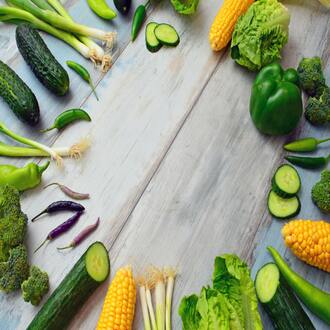Transcription The emotional eating cycle
The act of feeding not only provides the nutrients and energy necessary to maintain health, but also constitutes a very important element of the emotional system, which is evident from very early in life, when, for example, the mother comforts her child by breastfeeding. Likewise, at any age, people continue to use the act of drinking or eating to console themselves, to attenuate sadness or simply to stave off boredom.
We must learn to regulate our eating behavior, taking into account not only the quantity and quality of nutrients provided by food, but also through the knowledge and management of our emotions, an aspect that has a direct impact on our diet.
Physiological hunger: It is the hunger caused by the great stimuli that certain substances exert on our brain, when our organism needs to ingest food to maintain the internal processes active. For example, when the concentration of glucose in the blood is very low, the lateral hypothalamus is stimulated and produces stimuli that force us to eat.
Satiety: This is the perception of the human body that there is no immediate need for food intake. It is produced when some signals stimulate the hypothalamus, making us feel satisfied or full.
Personal tastes: Personal tastes are fundamentally influenced by the following three factors:
- The dietary patterns of the country, region, etc. For example, Asians eat a lot of rice, Mexicans eat a lot of corn, etc.
- The cultural or religious traditions of the family, for example: What do they usually eat at celebrations; what do they recommend that new mothers eat; etc.
- Personal criteria, formed from cultural level, interpersonal relationships, etc. For example, he may prefer varied diets instead of heavy diets; or eat fish instead of poultry.
Man should feed according to the physiological needs of the organism. Food should be fed according to the physiological needs of the organism, because depending on the lifestyle practiced by the subject, the organism adapts its way of feeding. For example, a lumberjack and a computer operator, after three or four hours of activity, will not feel hunger with the same intensity, nor will they need the same food or the same quantities to satiate themselves.
Relationship between emotion and food.
Emotion: It is a very intense feeling of joy or sadness produced by an event, a memory or an idea. There are 6 basic emotions: surprise, disgust, sadness, anger, fear and joy or happiness.
Positive or pleasant emotions: are those that provide tranquility and well-being to the individual, among them we have joy or happiness and euphoria.
Negative or unpleasant emotions: Those that cause discomfort, anxiety and worry to the individual. Examples: Sadness, anger, and impatience.
The relationship between emotions and food is not simple, emotional states and moods can influence eating behavior, and in turn food can modify emotions and moods.
Emotional eating.
It is the ingestion of food, as a way to cope with emotions, without physiological hunger (biological needs for nutrients). In other words, it is a way for people to take refuge in food when they are stressed, sad, lonely, bored, or feel restlessness, fear, etc.; and also due to the effect of positive emotions such as euphoria, romanticism, etc.
Emotional eating begins to be educated from birth, when the baby is put to breastfeed to begin to feed and at the same time, feel pleasure, affection, protection; thus beginning to establish a close relationship between feelings of insecurity, fear, etc. with the act of eating.
This learning process continues to be strengthened when the child is assisted and fed by the mother, when crying because of hunger or other discomfort; when the child is rewarded with treats and also when favorite foods and drinks are offered at family celebrations.
Elements that favor emotional eating:
- While eating, all other problems take a back seat, this causes emotional tension to dissipate to some degree and the individual feels better.
- On the other hand, some foods have certain substances that when associated with other foods produce the sensation of well-being and relaxation. For example, chocolate.
Differences between physiological hunger and emotional hunger.
Physiological hunger:
- It arises gradually.
- It can be satisfied with any food.
- You feel satisfied after eating the necessary amount of food.
- When you finish eating you feel relaxed.
Emotional hunger:
- You feel an urgent need to eat.
- You prefer to eat certain things, for example pizza, candy or ice cream.
- You eat more than usual because you do not feel satisfied.
- When you finish eating, feelings of guilt surface.
emotional eating




